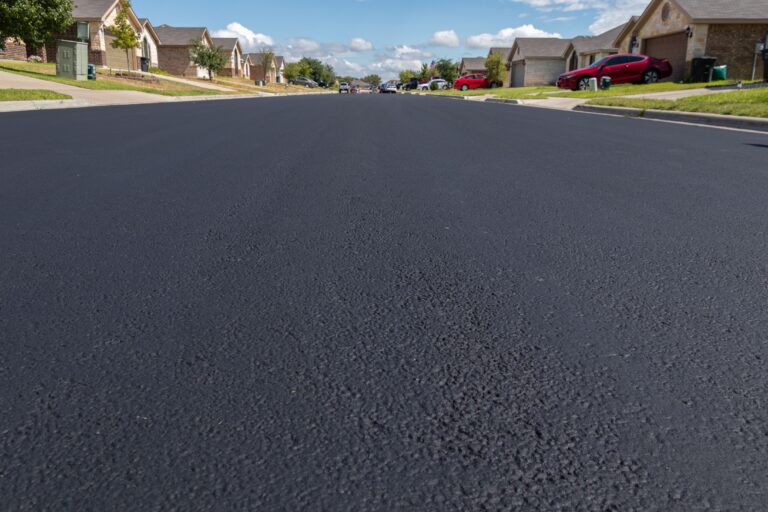Why Crack Routing Before Crack Sealing?
Published on September 13, 2020

Kent Nobis, APM

Pavement routing in Texas is not fairly common, but there are still many federal, state, and local thought leaders (including private and commercial property owners) that aren’t aware of the advantages of this maintenance procedure. I just worked on a project where I recommended pavement routing in Vaquero / Westlake, TX. I saw in the field it’s distinct advantages. Here is why:
When cracks begin to appear in pavement, it is important to have it fixed quickly to prevent further damage from developing. However, many people are unaware that there are many advanced repair techniques that can be used not only to prevent cracks but also to extend the life of pavement. Crack routing is one repair method that, when combined with crack sealing, can extend the life of pavement; in preparation of the High Density Mineral Bond.
What is Crack Routing?
Crack routing is an additional repair method that can be done at the same time as crack sealing. When cracks begin to form in pavement, water can seep into the cracks and degrade the ground beneath. This leads to potholes, uneven pavement, and other forms of pavement damage. With crack sealing, a hot, elastic material is poured into the cracks to fill them up and prevent water from seeping in.
While crack sealing is used to repair cracks, there are additional techniques that can be used in combination to increase its effectiveness. One of these is crack routing. With crack routing, a machine is used to open up the cracks, widening and deepening them. After this is done, then the sealant is poured in, filling up the crack. When done together, crack routing and sealing can drastically extend the life of your pavement, along with the installation of the High Density Mineral Bond.
Why Crack Routing Before Crack Sealing?
Crack routing may sound a little strange. If you want to repair a crack, why would you make a crack bigger before filling it in? Wouldn’t that just make the crack even worse?
Actually, crack routing helps make crack sealing more effective. When crack sealing and filling is done without routing, the sealant usually settles towards the top of the crack and never reaches the bottom. This means that there is still damage present beneath the pavement surface, which can lead to further degradation. By using crack routing and opening up the crack, sealant can reach the bottom of the crack.
As well, crack routing extends the life of pavement. By opening up a crack, a reservoir is created, which allows the sealant to adhere properly and evenly to the side of the crack. During the winter, when temperature changes cause the crack to expand, the reservoir prevents damage from occurring and the sealant remains in place.
When crack sealing is done without crack routing, the sealant often isn’t properly bonded to the sides of the crack. This means that when temperatures drop and pavement starts to shift, the crack can be reopened and water can seep in, causing more damage and requiring another round of repair.
In summary, I recommend routing prior to crack sealing in order to provide the best performance and is used to (1) clean and prepare the crack to bond to the sealant and (2) to create a defined reservoir to accept thermal movement. You should immediately discontinue routing if you see excessive spalling because the pavement it too deteriorated to gain benefit.
So, when it comes to pavement cracking and asphalt crack sealing, make sure that you are using routing when appropriate. Using this one additional repair method can save you a lot of repairs further down the line; along with the combination of the the High Density Mineral Bond(HA5), you will then have streets that last longer and cost less to own.
Kent Nobis, APM
- Significantly extends pavement life
- Lower cost of pavement ownership/management
- Performance backed by seven year study
- Millions of square feet installed by municipalities
- High Public approval rating
- Faster installation
© Copyright Andale Construction Inc. All rights reserved
